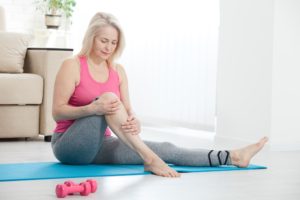 When a muscle cramp hits, it can be uncomfortable and sometimes even debilitating depending on how severe the cramp is. Muscle cramping can be temporary or last for a few days. Muscle cramps commonly occur in the muscles in your extremities – the arms and legs – and this is primarily due to blood circulation. You see, your arms and legs often receive less blood circulation than other areas of the body, and a lack of blood circulation can trigger muscle cramps.
When a muscle cramp hits, it can be uncomfortable and sometimes even debilitating depending on how severe the cramp is. Muscle cramping can be temporary or last for a few days. Muscle cramps commonly occur in the muscles in your extremities – the arms and legs – and this is primarily due to blood circulation. You see, your arms and legs often receive less blood circulation than other areas of the body, and a lack of blood circulation can trigger muscle cramps.
Other causes of muscle cramps include overexertion, dehydration, failure to stretch before exercise, magnesium deficiency, squeezed nerves, muscle fatigue, and potassium deficiency.
Advertisement
Our blood carries oxygen along with other essential nutrients that keep the body healthy and the muscles flexible. But if there are areas of the body not receiving adequate amounts of blood, it can lead to a tingling sensation, numbness, and even cramping. This is why it is important to increase blood circulation as a means of reducing muscle cramps.
Some simple methods to help reduce muscle cramps include getting up to stand or walk around, avoiding prolonged sitting, and not constricting blood flow by sitting in certain positions. Stretching is also important to keep muscles limber so that blood can flow easily.
Meditation has also been found to improve blood flow. Try activities such as yoga, deep breathing, and meditation, as they can help relax the body and reduce blood pressure.
Hydration is another key component of proper blood flow, so avoiding dehydration is essential. Ensure you’re getting adequate water in your diet. Even if you don’t feel thirsty, it’s important to regularly drink water throughout the day.
If you suffer from muscle cramps, incorporating these tips can help you reduce them.
Also read:
- 20 essential oils for muscle pain and how to use them
- Are your muscle cramps a sign of something serious?
- How to prevent painful muscle cramps naturally
